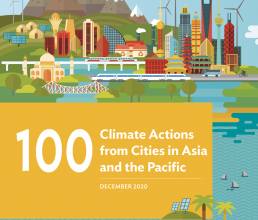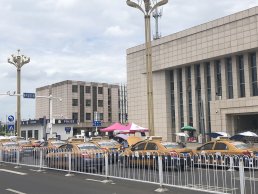First appeared in

Asian Development Bank
100 Climate Actions from Cities in Asia and the Pacific
The city of Xiangtan aims to ease the transfer between public transport options, particularly around train stations, to further promote low-carbon transport and reduce the need for private vehicles in the city.
The city of Xiangtan aims to ease the transfer between public transport options, particularly around train stations, to further promote low-carbon transport and reduce the need for private vehicles in the city.
The Xiangtan Railway Station is a large and historic station, with high-speed rail connections to other large cities such as Changsha and Zhuzhou. However, when travellers depart from the station, they are faced by a challenge if they wish to reach their final destination in Xiangtan by public transport, with no obvious options other than taxi or car.
$5M
INVESTMENT IN IMPROVED PUBLIC TRANSPORTATION
By investing around $2.8 million, including the ADB’s loan of $1.6 million, in making the station more of a multi-modal hub, Xiangtan hopes to reduce the reliance on private vehicles and encourage the mode of public transport, so to, reduce emissions and congestion, and make the city more liveable.
In this initiative, the traffic flow will be altered around Xiangtan Station and the smaller Bantang Intercity Railway Station, so that a sheltered bus stop will be close to the entrance, allowing people to switch between bus and train link more easily. The taxi queue will be relocated to a more orderly and safe location, making the bus stop more accessible.
This modification is a part of the ADB’s $150 million loan provided to the Xiangtan Low-Carbon Transformation Project.

Multi-model hubs are areas that allow passengers to easily change between different modes of low-carbon transport like bus, train, metro, or bicycle - something that Xiangtan is seeking to improve (photo by Shenzhen Urban Transport Planning Center).
The Challenge
Xiangtan’s railway station is not designed to promote public transport connectivity, increasing reliance on private vehicles and taxis.
Co-Benefits
Economic With transfer to buses becoming more comfortable and convenient, people will save on fuel and parking fees and streets will be less congested.
Social This low-cost solution will be the first of its kind in PRC, serving as a model for how a commuter-friendly multi-modal hub can incentivize public transport.
Health The modal shift from personal vehicles to public transportation will produce less pollutants, improving air quality for residents.

